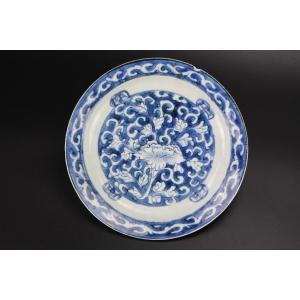China, Kangxi period (1661-1722).
The turquoise glazed vases of archaistic form imitating jade Cong vessels. The rectangular square section body with Bagua or Eight Trigrams design.
Lit:
Kangxi, Yongzheng, Qianlong: Qing Porcelain from the Palace Museum Collection, Hong Kong; Beijing, 1989, pl. 136, for a turquoise-blue glazed vase imitating archaistic bronze form.
About the cong-shape:
Cong is a form of ancient Chinese jade artifact. The earliest cong were produced by the Xuejiagang culture and the Liangzhu culture (3400–2250 BC); later examples date mainly from the Shang and Zhou dynasties.
Interest in the jade shape developed during the 12th–13th century Song dynasty. The shape continued to be used in ceramic and metalwork for centuries.
About the bagua or Eight Trigrams symbol:
The bagua is a set of symbols from China intended to illustrate the nature of reality as being composed of mutually opposing forces reinforcing one another. Bagua is a group of trigrams—composed of three lines, each either "broken" or "unbroken", which represent yin and yang, respectively. Each line having two possible states allows for a total of eight trigrams, whose early enumeration and characterization in China has had an effect on the history of Chinese philosophy and cosmology.
About turquoise glaze:
Turquoise glaze owes its color to copper oxide in an alkaline glaze mixture. It has a long history in Chinese ceramics, dating back at least to the Tang dynasty. Interest in turquoise glaze was also present among Middle Eastern potters, though their methods to achieve similar results differed. The technology varied depending on the material the glaze was applied to.
One of the curiosities of the Chinese potters' techniques was their use of saltpeter, a soluble material, often unfitted. The saltpeter was mixed with quartz and water (and sometimes with lead oxides or carbonates) to create low-temperature glazes.
After analyzing a late 19th-century raw turquoise glaze used at Jingdezhen, the renowned French ceramic chemist Georges Vogt wrote in 1900:
'The simplicity with which the Chinese prepare this turquoise ... is truly remarkable. Nothing in its composition needs to be melted, or to be fitted. The only preparation needed is to grind together the saltpeter, the quartz and the copper powder in suitable proportions and it is ready to be used on porcelain vases.'
Dimensions:
Height 12 cm, width 5 cm, depth 5 cm.
Condition:
The necks have probably been grounded down and resprayed with a turquoise color, it is possible that the necks have not been ground down but that the overspraying was done to cover up some sort of damage (not clearly visible, checked under strong UV light), one of the vases has a hairline of ca. 3.5 cm, furthermore in perfect condition.
Worldwide registered and insured shipping.
Take a look at our other listings for more Asian art, antiques, design, etc.
Inv. No: MW65














































 Le Magazine de PROANTIC
Le Magazine de PROANTIC TRÉSORS Magazine
TRÉSORS Magazine Rivista Artiquariato
Rivista Artiquariato